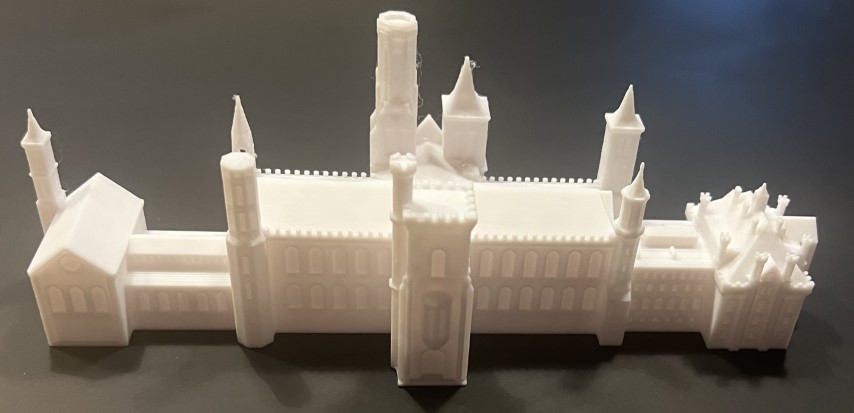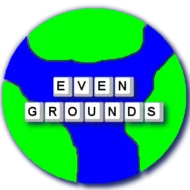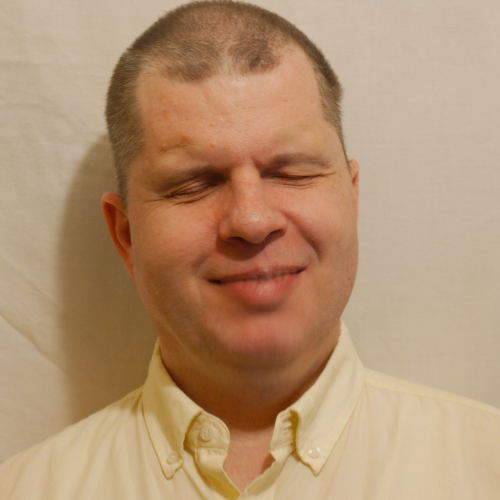Miniature 3d buildings for blind people
It has always fascinated me how to explain what a building looks like to a blind person. But as they say that a picture is worth a thousand words, a tactile experience is also definitely more accurate than a thousand words. For that matter, the two together is the best approach.
Since I couldn’t find a resource where I could get the models of 3d buildings, I created my own.

I found a 3d designer who created a few buildings for me, and also found a 3d print shop who printed and mailed them.
We started with some famous buildings from Washington DC, like the Capitol, Pentagon, White House and the Smithsonian Castle.
Next we created the Independence Hall and the 30th street train station in Philadelphia, and now we are working on buildings from Cleveland, Ohio.
The buildings are printed using white PLA, which feels like plastic. They are detailed to an extent that people can feel by touch, but we didn’t make them any more detailed, as it would increase the cost. However, they are definitely not just for blind people, they are visually attractive.
I created a store on Etsy, where these buildings will be available for purchase, they arrive in about a week or two. Unfortunately, at the moment I am only able to sell to the United States from this store, but if you would like to get the buildings in another country, get in touch privately and we will come up with a solution.
Some of the buildings are currently available in a smaller version, however, I don’t necessarily recommend those to blind people, because the regular version was planned so that most details can be touched, thus the small version will not be as interesting by touch. I am also experimenting with larger versions of buildings.
I created descriptions for all buildings for people who are holding the 3d models, from the blind people’s point of view.
There is a page where all available buildings are listed and linked to a description.
I also started a newsletter for people who are interested in learning about any new buildings, we plan to release one in about once or twice a month, hopefully even faster later.
Though this topic is somewhat related to accessible travel for blind people, I understand that when people signed up for the Even Grounds newsletter, they didn’t sign up to get notices about 3d buildings. This is why I will keep it on a separate list, and on this blog I will only make major announcements about the project.
I will also use Facebook to advertise the buildings, but I will keep it on a separate page for the same reason, people who signed up on the Even Grounds page may not be interested.
So, if you would like to learn more about the 3d buildings or continue receiving information, you can use the following links:
-
Newsletter to get an announcement when a new building is released
-
And my personal Instagram account where I will post building pictures amongst many other things I’m interested in.
-
And of course, the store where you can buy the buildings.
I am curious what you think, let me know in the comment section or contact me privately.


I have worked in the Transportation world for much of my recent years, am blind and consult to advocate on issues we all might encounter in my community.
I have always pushed for at a minum some sort of tactile diagrams to help others without sight to be able to understand a new construction project, transit stop or platform, etc. But this usually ends up with someone creating a simple tactile map using macaroni . Being able to capture proposed sites using a 3D printer would be a great solution to help our community understand what is being proposed and allow for a much better interaction to help planners understand some of our issues. It mmight be hhelpful if you could create a basic “how to” document to help others in trying to create a similar project in their own communities. Simple how to steps would be helpful with any hints or the identification of barriers you encountered would also be helpful. Thank you for sharing this idea and products you have produced.
Ken
Ken, thank you for your feedback. At the moment it is a small project, and while we are definitely thinking about other tactile objects like diagrams, we cannot commit to it in a large scale. However, I would like to hear any suggestions for when we are able to do it. I will definitely publish something about the process, because I don’t think it is too hard to replicate.